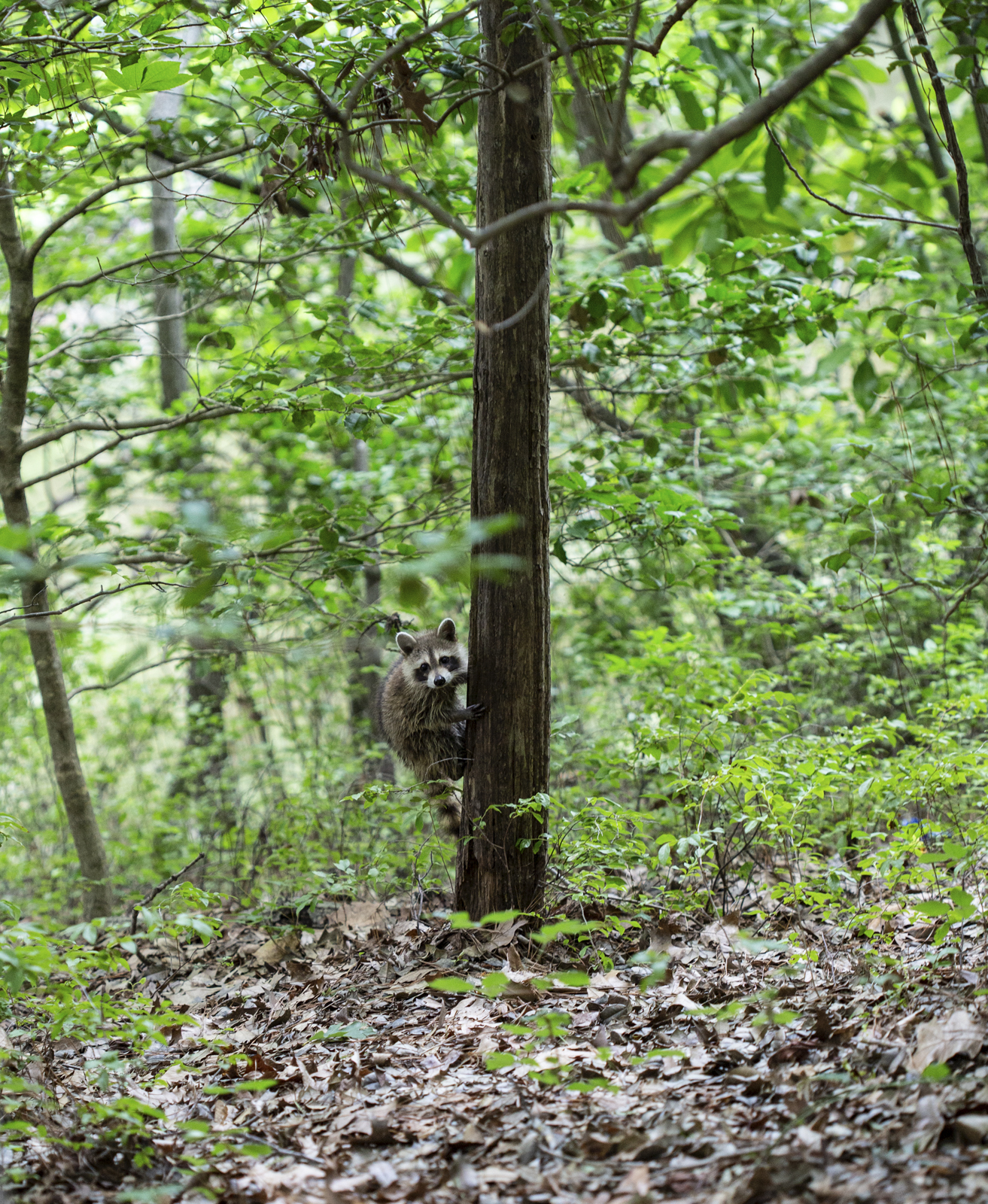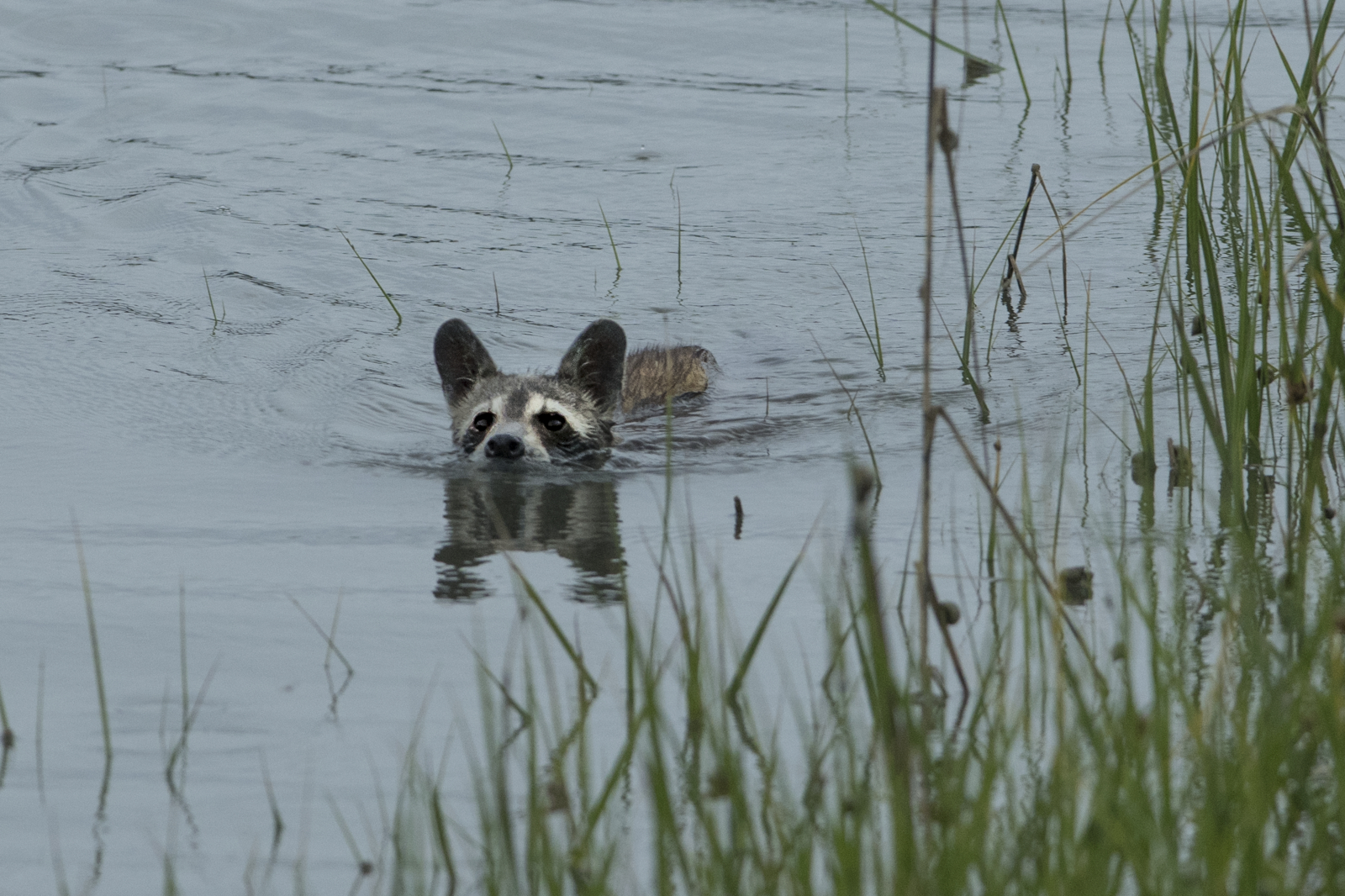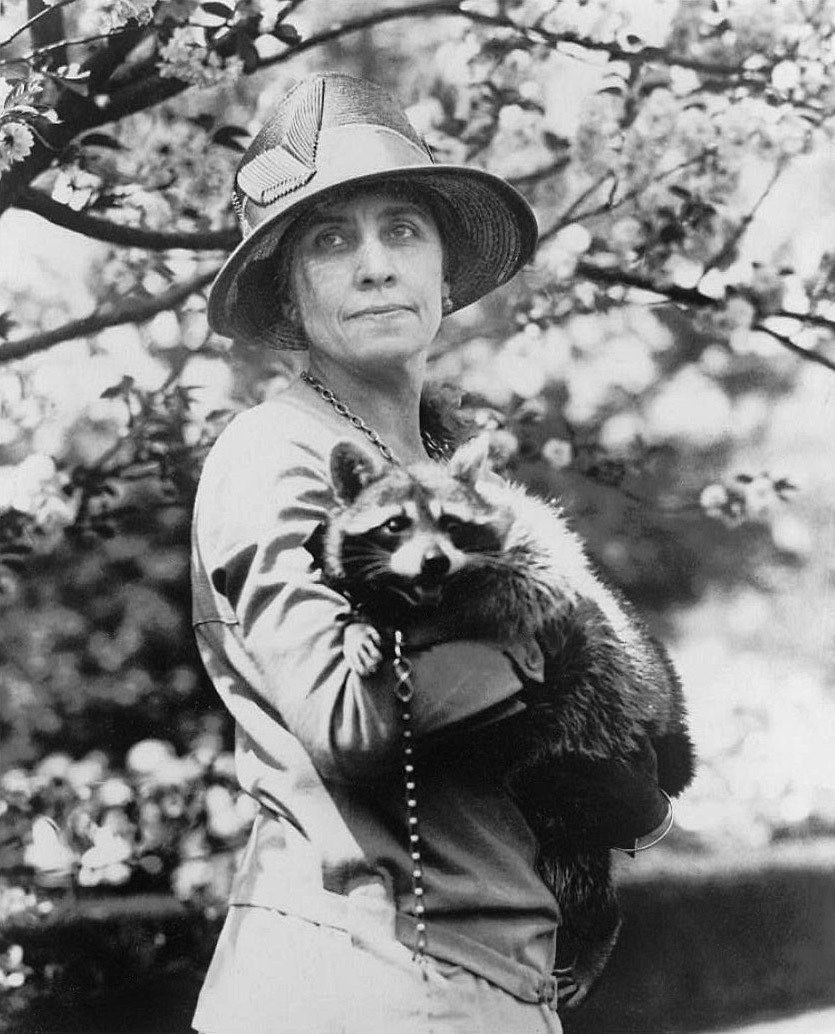It was a chilly morning at The Mariners’ Museum and Park as I went on with normal opening procedures. The sun had not yet come up and I had just finished unlocking the breezeway and Huntington Room before working my way up to Security Control. I breached the second set of glass doors when I sensed a presence staring at me, from where yet, I did not know. I continued to walk into Control and there it was, the ring tailed bandit on the other side of the exterior door, peeking in at me. I couldn’t help but feel excited. Raccoons are one of my favorite creatures we have here in the Park!
Raccoons are considered to be one of the most adaptable individuals and can be found in both rural and urban areas. Their hands give them the ability to climb, touch and are more commonly known for digging in the trash. You may have heard how raccoons “wash their food”. Did you know that raccoons wet their food in order to soften it? This allows them to see or find other objects in or on their food.
The name raccoon comes from the Native Powhatan word, aroughcun, meaning “animal which scratches with its hands”. Furthermore, the Aztecs followed suit and named the raccoon the mapachitli, “one who takes everything in its hands”. Today the Spanish name for the raccoon is “mapache” (New Hampshire PBS, 2021).
Have you seen a raccoon out during the day? If so, don’t be alarmed. Although mostly nocturnal, the raccoon is known to be out during the day, especially in the spring and summer. This time is known as baby season and, oftentimes, mothers are teaching their young to hunt at around 9-12 weeks of age. Raccoons are both protective and nurturing mothers. They will have their kits, raccoon children, stay with them for up to a year! This is why you may see more than one generation at a time.
Lastly, don’t let that face mask of theirs fool you, they may be clever but they aren’t always intentionally thieves. That mask actually serves the purpose of deflecting light which helps the animal see better. You may have seen this tactic in sports, many athletes have adopted the idea as well with applying black marks under their eyes.
Fun Fact: There was a raccoon that started out as Thanksgiving dinner for the Whitehouse and ended up staying as a pet, Rebecca. Ms. Rebecca was meant to be eaten, raccoon meat was common at this time, but months later she had her own engraved collar and can be seen in pictures with the First Lady, Grace Coolidge (Truman, M. 2007).
Sources:
Truman, Margaret (2007), The President’s House: 1800 to the Present, Random House, p. 150, ISBN 9780307417312
“Raccoon Facts”. PBS Nature. February 7, 2012. Retrieved October, 2021.
“Wildlife Junior Journal” Raccoons. New Hampshire PBS.2021. Retrieved October, 2021.


